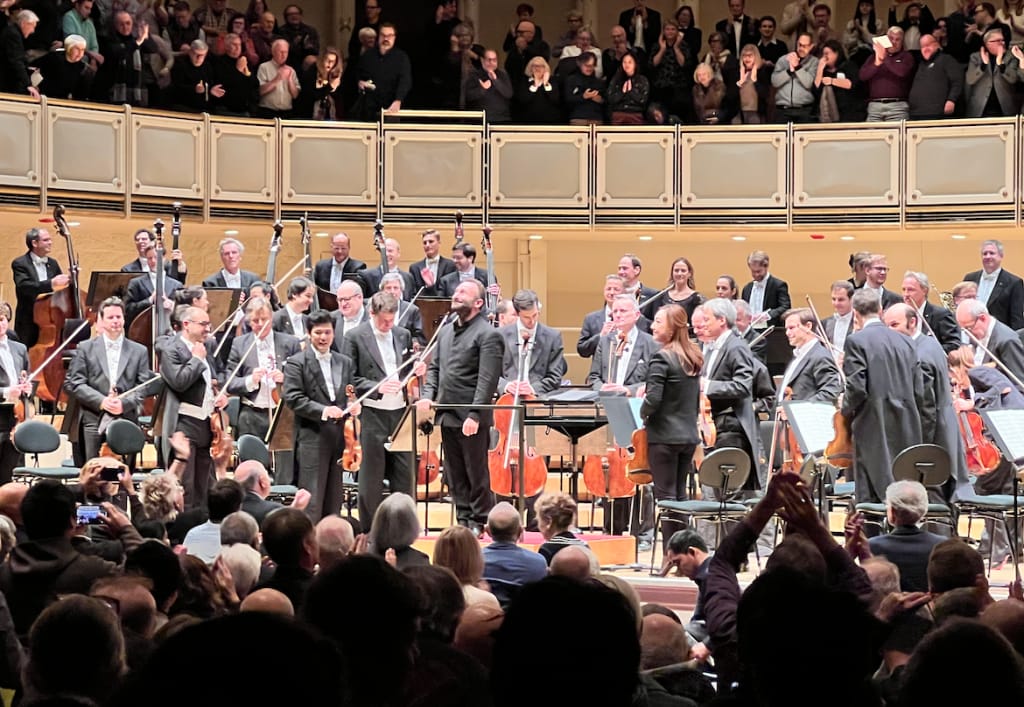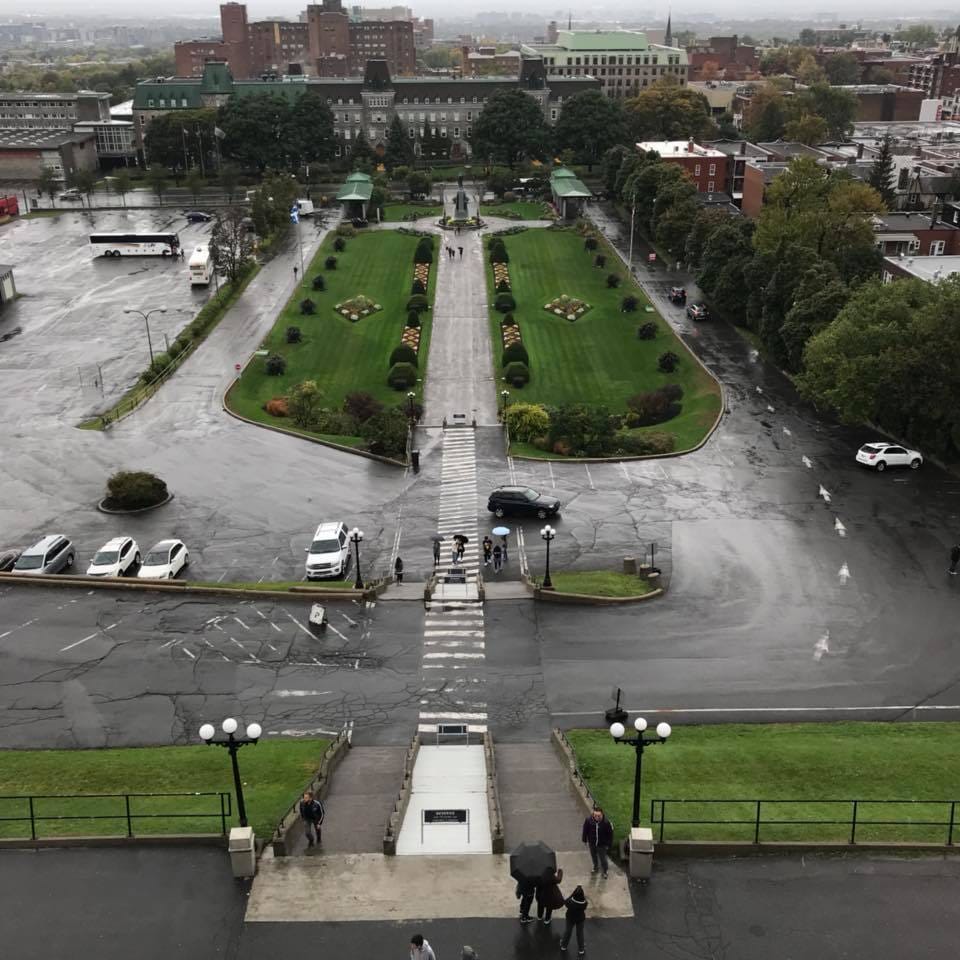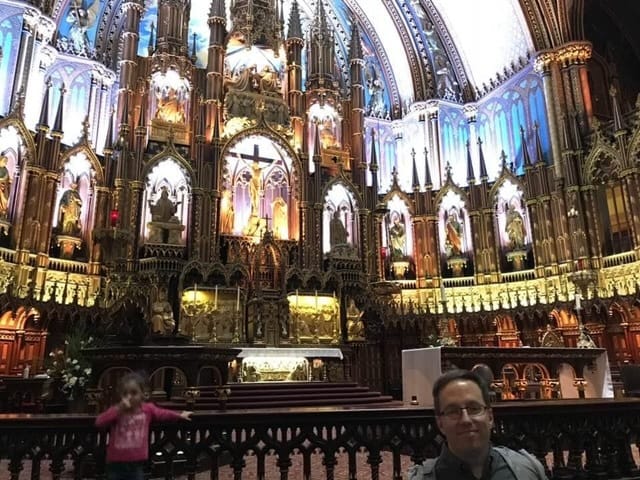- Gathering Note
- Posts
- Mahler, Bruckner, and a nose-picking moment of truth
Mahler, Bruckner, and a nose-picking moment of truth

Kirill Petrenko and the Berlin Philharmonic
If classical music had its own sacred pilgrimage, the Berlin Philharmonic would undoubtedly be its ultimate destination—a place where music reaches its zenith. Attending one of their concerts isn’t just hearing an orchestra; it’s an experience akin to standing in awe at the Vatican or Mecca. No matter what they’re playing, you simply need to hear them. I’ve been fortunate enough to witness their majesty twice, both times in Chicago. The first was Mahler’s 7th Symphony, and more recently, Bruckner’s 5th Symphony.
Bruckner’s 5th is often regarded as one of the composer’s most challenging works to comprehend. It unfolds gradually over three movements, creating the impression of an extended prelude. Much like the nearly two-hour Act I of Götterdämmerung, this prelude seems to build toward something profound and otherworldly. By the time listeners reach the fourth and final movement, the stage is ready for something monumental. Bruckner delivers a masterful synthesis of earlier themes. This is woven into a fusion of forms and structures. It approaches his vision of the heights music can reach.
The Berlin Philharmonic’s performance exemplified perfection in every sense, reaffirming their well-deserved status as one of the world’s greatest orchestras. Their mastery of phrasing brought clarity and depth to even the most intricate passages. Dynamic contrasts were handled with breathtaking precision, each shift carefully calibrated to maintain the work’s architectural integrity.
The tonal color they achieved was nothing short of sublime, with the strings producing a rich, luminous warmth, the brass delivering refined power, and the woodwinds adding delicate, expressive detail. Their ability to sustain such a broad range of textures and moods while maintaining cohesion highlighted their unparalleled skill. In these ways, the Berlin Philharmonic is the perfect Bruckner orchestra.
Yet, hearing this unfold in real time— perched with open mind atop a booster seat— I was hoping to be more impressed than I was. Close friends of mine have been trying to convince me for years that I should love Bruckner. Bruckner, they urged, is searching for some sort of meaning in his music—but it’s meaning that I just cannot see. I comprehend the structure, understand the goal, but all of it comes across as one big façade. It’s impressive, even beautiful, but doesn’t ultimately say much.
In 2017, I went to Montreal for the first time. Living in Seattle, I was well familiar with Vancouver and British Columbia. But the rest of Canada was at the time a mystery to me. Part of me liked the idea of going to a part of the country where I knew I was going to struggle with the language. But part of me also liked that Quebec is very Catholic. Its Catholic roots are evident all over the place. Cathedrals, churches, pilgrimage sites, and Jesuit martyrs. One site in particular, Saint Joseph’s Oratory of Mount Royal is one of the most imposing religious complexes I’ve ever been to. I visited on a rainy, October afternoon, the slate sky spitting a light, steady rain. Mount Royal is a minor basilica, but it is also the highest building in Montreal. Pilgrims trying to get inside have two options—take the escalator or climb the stairs for hundreds of feet beyond the summit of Mount Royal, up the exterior, and eventually to the entrance. For some pilgrims the climb is done on their knees, or as one sign reads: kneeling all the way up. How Brucknerian!

This pilgrim, once I reached the top on foot, was impressed but the awe didn’t last. This is often the case when I visit churches, especially Catholic ones. Catholic religious, representational art, of which churches are one form, seek to manifest the intangible. Their art is trying to expose us to the infinite, yet for me, they inevitably convey the finite. Bruckner seems to be doing the same through his symphonies and, like the cathedral, he misses the essentially human element of both religion and spirituality.

A few weeks after hearing Bruckner’s 5th Symphony, I heard another 5th–Mahler’s 5th—for the second time this year. The first was with the San Francisco Symphony and Michael Tilson Thomas. Since being diagnosed with terminal brain cancer, I’ve tried to catch as many Tilson Thomas concerts as I can, especially when he conducts Mahler. There is perhaps no American-born conductor today with the same knack for Mahler’s symphonies. Tilson Thomas, like his former teacher and mentor Leonard Bernstein, expertly focuses every note in a Mahler symphony into an expressive vehicle to expose the best and worst of us and our world.
My more recent experience with the 5th was with Erina Yashima and the Civic Orchestra of Chicago in early December. Frederick Stock founded the ensemble in 1920 as a training orchestra. Members come from near and far. They are some of the best young musicians in the world. Each of them is eager to become a better musician and learn under the direction of the many luminary conductors the Chicago Symphony Orchestra is able to draw.
Of course, the Civic Orchestra of Chicago is no Berlin Philharmonic. The former’s performance of Mahler’s 5th lacked the cohesion and brilliance that Berlin brought to Bruckner. But what the Civic Orchestra’s dedicated musicians brought instead was intensity driven by a still-unfolding quest to simply experience everything. You can count on early-career musicians to throw themselves deep into Mahler’s music, relishing the statements the composer is trying to make and the statement playing his symphonies says about themselves as artists. At times, it worked for them, like in the first movement when the strings and brass dug deep into their parts. But the same intensity led to a white-knuckle experience in the third movement, when the scherzo threatened to fly apart. As one friend told me, “When young musicians take on a Mahler symphony you are rooting for them to make it to the end.”
Mahler’s music is vital, whereas Bruckner is starchy. Like Bruckner, Mahler is Catholic, but his conversion yields a more experiential approach to faith than Bruckner’s cradle-to-grave faith. Bruckner is humble. Mahler is human. Bruckner suggests people are gazed upon from above. Mahler believes people are at the center of spiritual understanding. His 5th Symphony begins with a funeral march that is relentless and bleak. The fourth movement, the Adagietto, is one of the most perfect arguments for love in all of music. All of this pushes earnestly and authentically toward a triumphant finale. Mahler’s spirituality exalts messiness and hyperbole. In the hands of Yashima and the Civic Orchestra of Chicago, the symphony came alive with energy and purpose.
Hearing both concerts so close together brought me back to one of my favorite memories from all of my travels—one with an absurdly spiritual significance. Days before my visit to the Saint Joseph’s Oratory of Mount Royal in Montreal, I visited the city’s famed Notre-Dame Basilica. It’s about you would expect – a pleonastic interior, lots of verticality, and an impressive altar that seemed designed to make it clear to everyone present—whether staring forward in their pews or processing to receive communion—that what is at the front of the church is far more important than anything they might be preoccupied with in their ordinary lives. After exploring the church for a little bit, I wandered up to the front and stood in front of the altar to have my picture taken. Sometime between the few seconds it took for me to get into position and my photographer to snap the picture, a little girl wandered into the frame with her finger planted deep in one nostril. Amid the meticulous and Brucknerian order of this cathedral—in the same spot where Catholic faithful receive the most holy sacrament of communion—a little girl took part in one of the most ordinary of primate rituals: She dug deep.

I came across this photo recently and shared it with an Episcopal priest friend who was about to make his first trek to Quebec with his husband. Their vacation had been planned in part as a post-election respite, but the election’s surprising outcome also gave their trip a tinge of a scouting trip—the first steps of an escape plan should things turn south down south.
Studying the picture for the first time in years, I realized the nose-picker set against Notre-Dame’s altar is pure Mahler on Bruckner. The child was the perfect visual metaphor for the tension I feel having to choose between Bruckner and Mahler. As a music lover, I feel pulled between their competing spiritual visions. The ornate cathedral and its towering spirituality reflect Bruckner’s unwavering faith, while the girl’s unselfconscious act embodies Mahler’s exploration of humanity’s innate contradictions and—arguably—imperfections. Together, they serve as dynamic contrasts: the sacred and the mundane, the eternal and the fleeting, the divine and the human. The prophet Isaiah, describing a future of just and lasting peace, proclaims, “and a little child shall lead them.” The little nose-picker is a reminder that even in the most exalted spaces we carry our humanity with us. Mahler might laugh and embrace this; Bruckner would certainly bow his head and pray for her innocence. Both would agree that her presence enriches the picture, just as life’s imperfections enrich our spirituality.
That scene of the girl at Montreal’s Notre-Dame Basilica encapsulates why I find myself perpetually drawn to Mahler over Bruckner. Bruckner’s symphonies, like the cathedral, aim for transcendence, but leave little room for the unexpected humanity that sneaks in and disrupts this order—be it a little girl digging deep or my husband next to me coughing through the final movement of the Bruckner. Mahler, on the other hand, invites and celebrates those imperfections—be it a misstep, a gasp of despair, or a laugh in the face of tragedy. His symphonies try to capture the world and everything in it. It is Mahler who reminds us that the sublime is not a retreat from our humanity but an embrace of it. In his music, as in life, we find that the path to meaning isn’t a grand staircase climbed on our knees, but a series of messy, unpredictable moments that transform the sacred into something deeply personal and profoundly alive.